A standard 1944 Mercury dime is worth $10-$20 in uncirculated condition, with higher grades reaching $50+. The 1944-D and 1944-S varieties in MS60+ condition typically range from $7-$15. Error coins like uncentered broad strikes can fetch over $175 in MS64 grade. Premium examples with full bands command significantly higher prices, with top-grade MS68 specimens selling for $15,000+. The 1944-S in MS65+ condition ranges from $1,200 to $12,000 depending on grade. Circulated versions are worth slightly above silver melt value, while finding high-grade examples with full bands or notable errors remains challenging for collectors.
The 1944 Mercury dime represents one of the most accessible entry points for silver coin collectors, yet certain varieties can command prices exceeding $15,000 at auction. Understanding the differences between Philadelphia, Denver, and San Francisco strikes—along with valuable error types—can transform what appears to be pocket change into a significant find. This guide breaks down the specific values, grading benchmarks, and error types that separate common circulation finds from premium collectibles.
Understanding the 1944 Mercury Dime Production
The United States Mint produced Mercury dimes across three facilities in 1944, each contributing different quantities to the total mintage. The Philadelphia Mint struck 231,410,000 pieces without a mint mark, while Denver produced 62,224,000 coins marked with a “D,” and San Francisco contributed 49,490,000 pieces bearing an “S” mint mark. These mint marks appear on the reverse side of the coin, just to the left of the fasces bundle.
The composition consists of 90% silver and 10% copper, with each dime weighing 2.5 grams and measuring 17.9 millimeters in diameter. This silver content establishes a baseline melt value that fluctuates with precious metal markets, currently providing a floor price of approximately $1.50 to $2.00 for worn examples. However, numismatic value quickly surpasses melt value for coins in better condition or featuring special characteristics.
Standard Value Guide by Mint Mark and Grade
The condition of a 1944 dime dramatically affects its market value. Circulated examples in Good (G-4) to Fine (F-12) condition typically trade near silver melt value, ranging from $1.50 to $3.00. As preservation quality improves, premiums increase substantially.
For the 1944 Philadelphia issue (no mint mark), values begin around $2.00 in circulated grades. Extremely Fine (EF-40) examples command $3.50 to $5.00, while About Uncirculated (AU-50) pieces reach $6.00 to $8.00. Once entering the Mint State range, an MS-60 specimen typically sells for $10.00 to $12.00, with MS-63 examples bringing $15.00 to $20.00. Premium uncirculated grades show significant jumps: MS-65 pieces trade for $35.00 to $50.00, while MS-67 examples can reach $150.00 to $250.00.
The 1944-D Denver variety follows a similar pattern with slight variations. Circulated examples trade for $1.75 to $3.00, EF-40 coins bring $4.00 to $6.00, and AU-50 specimens sell for $7.00 to $9.00. In Mint State, MS-60 coins command $12.00 to $15.00, MS-63 examples reach $18.00 to $25.00, and MS-65 pieces trade for $40.00 to $60.00. Higher grades become progressively scarcer, with MS-67 specimens selling for $200.00 to $350.00.
The 1944-S San Francisco variety maintains similar values in lower grades but shows interesting characteristics in premium conditions. Circulated examples trade for $2.00 to $3.50, with EF-40 coins bringing $4.50 to $6.50. AU-50 pieces sell for $8.00 to $10.00, while MS-60 examples command $13.00 to $16.00. MS-63 coins reach $20.00 to $28.00, and MS-65 specimens trade for $45.00 to $65.00.
The Full Bands Premium Factor
The designation “Full Bands” (FB) represents one of the most significant value multipliers for Mercury dimes. This term refers to the horizontal bands visible on the fasces bundle on the coin’s reverse. When these bands show complete, unbroken separation across the central portion, the coin qualifies for the FB designation, indicating exceptional strike quality and pristine preservation.
For the 1944 Philadelphia issue, an MS-65 FB specimen commands $200.00 to $300.00 compared to $35.00 to $50.00 for a regular MS-65. The premium grows exponentially in higher grades. An MS-66 FB example sells for $450.00 to $650.00, while MS-67 FB pieces reach $1,200.00 to $1,800.00. At the pinnacle, an MS-68 FB specimen achieved $15,275.00 at Heritage Auctions in 2023, demonstrating the extraordinary premiums collectors pay for perfect strike definition.
The 1944-D variety shows similar FB premiums. An MS-65 FB coin trades for $250.00 to $350.00, MS-66 FB examples bring $500.00 to $750.00, and MS-67 FB specimens command $1,500.00 to $2,200.00. The 1944-S follows comparable patterns, with MS-65 FB coins valued at $275.00 to $400.00, MS-66 FB pieces reaching $600.00 to $900.00, and MS-67 FB examples trading for $1,800.00 to $2,500.00.
Identifying full bands requires careful examination under proper lighting. The central portion of the fasces should display complete separation between the horizontal bands, without any weakness or merging. Even a slight softness in the strike disqualifies a coin from this designation, which explains why FB examples represent only a small percentage of surviving specimens.
Valuable Error Types and Varieties
Mint errors transform common coins into numismatic prizes, and the 1944 Mercury dime series includes several documented error types worth substantial premiums. Understanding these errors helps collectors identify potentially valuable pieces that might otherwise go unnoticed.
The broad strike error occurs when a planchet shifts outside the collar die during striking, resulting in a coin with a larger diameter than standard and lacking the normal raised rim. A 1944 broad strike graded MS-64 by PCGS sold for $176.88 at Stack’s Bowers in 2022. These errors typically show the design spread across a wider surface, with the date and mint mark often appearing closer to the edge than on normal strikes.
Off-center strikes happen when the planchet feeds incorrectly into the press, causing the dies to strike only a portion of the blank. The value depends heavily on the percentage off-center and whether the date remains visible. A 1944-D dime struck 15% off-center with full date visible sold for $125.00 in MS-63 condition, while a 30% off-center example without a visible date brought only $45.00 despite similar preservation.
Double die errors result from die production mistakes that create doubled images on the finished coin. While major double die varieties don’t exist for the 1944 Mercury dime series, minor doubling on letters or design elements can add modest premiums of $10.00 to $30.00 for uncirculated examples showing clear doubling under magnification.
Clipped planchets occur when the metal strip used to punch out coin blanks overlaps, creating a coin missing a portion of its edge. Straight clips typically add $15.00 to $40.00 to standard values for uncirculated examples, while curved clips from the edge of the metal strip command slightly higher premiums of $25.00 to $60.00.
Die cracks and cuds represent advanced die deterioration stages. Minor die cracks add negligible value, but major cracks or cuds—raised blobs of metal where a piece of the die has broken away—can bring $50.00 to $150.00 premiums depending on size and location. A 1944-S dime with a dramatic cud covering portions of the date sold for $198.00 in AU-55 condition.
Authentication and Grading Considerations
Professional grading provides authentication and condition assessment that significantly impacts marketability and value. The two primary third-party grading services, Professional Coin Grading Service (PCGS) and Numismatic Guaranty Corporation (NGC), use the 70-point Sheldon scale to assign numerical grades.
For common-date Mercury dimes like the 1944 issues, professional grading becomes economically justified at approximately the MS-65 level and above, where certification can add credibility worth the $30.00 to $50.00 grading fee. Coins grading MS-67 or higher should always be professionally certified before sale, as the substantial premiums these grades command require third-party verification for buyer confidence.
When evaluating raw (uncertified) 1944 dimes, focus on several key areas. Check the high points of Liberty’s hair for wear—even slight rubbing drops the coin from Mint State to About Uncirculated. Examine the fasces bands on the reverse, as this area receives the most scrutiny from both graders and collectors. Look for original mint luster; cleaned or polished coins suffer significant value reductions regardless of their technical grade.
Counterfeits rarely target common-date Mercury dimes due to their modest values, but alterations do occur. The most common manipulation involves adding fake mint marks to Philadelphia strikes, attempting to create scarcer varieties. Genuine mint marks show the same depth and quality as the surrounding design elements, while added marks often appear weaker or slightly different in font style.
Market Trends and Collecting Strategies
The Mercury dime series enjoys sustained collector interest due to its beautiful design, manageable size, and historical significance. The 1944 issues, while common, serve important roles in various collecting approaches.
Date collectors seeking one example from each year find 1944 specimens readily available in most grades. For this purpose, a nicely struck MS-63 or MS-64 example from any mint provides an attractive representative at reasonable cost, typically $15.00 to $30.00. Collectors pursuing this strategy often prioritize eye appeal over technical grade, seeking coins with original surfaces and strong luster even if minor contact marks preclude premium grades.
Full set collectors assembling all dates and mint marks discover that 1944-P, 1944-D, and 1944-S present no significant challenges. Budget-conscious collectors can complete these three varieties in MS-63 condition for approximately $60.00 to $80.00 total. Those seeking higher grades face steeper costs but still find ample availability through the MS-65 level.
Full Bands specialists represent the most demanding collectors in this series. They pursue only examples showing complete band separation, accepting that this limits available inventory and requires higher investment. A complete FB set of 1944 varieties in MS-65 FB grade costs approximately $700.00 to $1,000.00, while MS-66 FB examples push the total investment to $1,500.00 to $2,200.00.
Error collectors find the 1944 issues attractive due to the high mintages, which increase the probability that errors occurred and survived. Since most 1944 dimes circulated extensively, discovering error examples in higher grades presents exciting challenges. Auction results show consistent demand for documented error types, with properly certified examples finding ready buyers.
Maximizing Value When Buying or Selling
Understanding market dynamics helps both buyers and sellers achieve fair transactions. For buyers, patience often rewards those who wait for favorable opportunities. Common-date Mercury dimes in average uncirculated grades appear regularly at coin shows, online auctions, and dealer inventories, so rushing into purchases rarely makes sense.
When purchasing raw coins, expect to pay grading service estimates conservatively. A coin that appears to be MS-64 might grade MS-63 under professional scrutiny, so price accordingly. For certified coins, compare prices across multiple venues—major auction houses, online marketplaces, and dealer websites—to establish current market values for specific grade and variety combinations.
Sellers benefit from understanding when professional certification adds value. A 1944 dime in MS-63 condition typically sells for $15.00 to $20.00 raw, while certification costs $30.00 to $50.00, making grading unprofitable. However, that same coin in MS-66 condition might sell for $80.00 raw but $120.00 certified, justifying the expense. Error coins generally benefit from certification regardless of grade, as third-party authentication significantly increases buyer confidence.
Timing matters less for common-date Mercury dimes than for many numismatic items. Silver price fluctuations affect circulated examples more than uncirculated pieces, as higher-grade coins trade primarily on numismatic rather than precious metal value. However, major market movements can create opportunities—rising silver prices often bring hoards to market, temporarily increasing supply and creating buying opportunities for patient collectors.
Building Your 1944 Dime Collection
Whether you’ve discovered a 1944 dime in inherited coins or you’re actively building a Mercury dime set, these specimens offer accessible entry points into silver coin collecting. Start by determining your collecting goals—casual accumulation, complete date sets, or specialized pursuits like Full Bands examples—then allocate your budget accordingly.
Examine each coin carefully using proper lighting and magnification. A 5x to 10x loupe reveals details impossible to see with the naked eye, helping you spot both positive attributes like full band separation and negative factors like cleaning or damage. Compare your findings against certified examples through online price guides and auction archives to develop grading skills and market knowledge.
Join collector communities, both online and through local coin clubs, to share discoveries and learn from experienced numismatists. The Mercury dime series attracts passionate collectors who freely share knowledge about varieties, errors, and market trends. These connections often lead to trading opportunities and access to coins before they reach broader markets, giving active community members first chance at desirable pieces.
You may be interested:
- 1859 Indian Head Penny Coin Value Complete Errors List And No Mint Mark Worth Guide For Collectors
- 1911 V Nickel Coin Value Guide Complete Errors List And No Mint Mark Worth Today
- 1902 Dime Coin Value Complete Errors List With O S And No Mint Mark Worth Guide
- 1788 Quarter Coin Value Complete Guide Errors List And D S P Mint Mark Worth Revealed
- 1776 To 1976 Bicentennial Half Dollar Coin Value Complete Errors List And What Your D S And No Mint Mark Coins Are Actually Worth
- 1990 Penny Coin Value Errors List How D S And No Mint Mark Pennies Are Worth Thousands Of Dollars

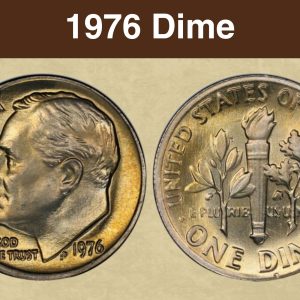
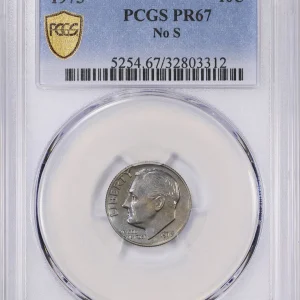
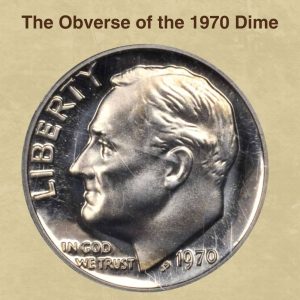
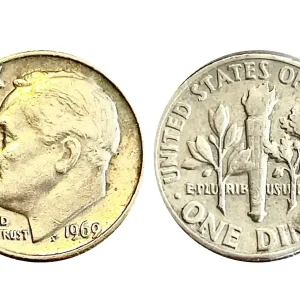
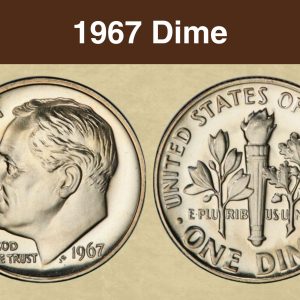
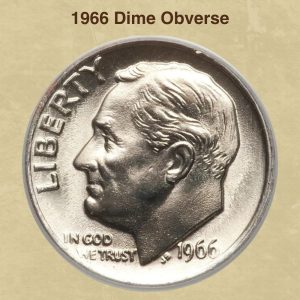
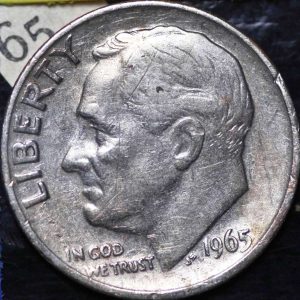
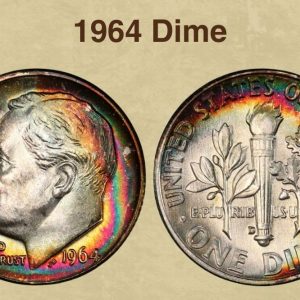
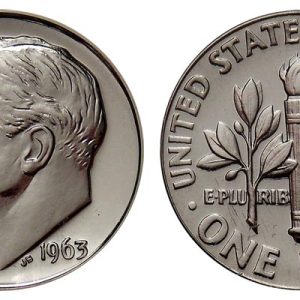
How much is a 1944 dime worth with no mint mark?
A 1944 dime without a mint mark (from the Philadelphia mint) is worth between about $2 and $7 in circulated condition, but can be worth up to $425 or more in pristine, uncirculated condition. The value depends heavily on its condition, with high-grade uncirculated coins and those with errors like a Double Die Obverse (DDO) fetching significantly higher prices.
What’s the error on a 1944 dime?
Common 1944 dime errors include striking flaws like broadstrikes and off-center strikes, and die-related errors such as doubled dies and die cracks. Misspellings, particularly the “In Cod We Trust” error, are also highly sought after by collectors. The large number of coins produced in 1944 can make errors more common, and their value depends on rarity, condition, and collector demand.
What to look for on a 1944 dime?
The 1944 Mercury Dime is a very well-known coin liked by collectors. It has a special look, showing a young Lady Liberty on the front with a winged cap that stands for “liberty of thought.” The back shows a fasces, an olive branch, and the mint mark, which make it a rare and valuable coin for collectors.
How much is a 1944 S Mercury dime worth?
 A 1944-S Mercury dime’s value ranges from around `$4.50 to $7 for circulated coins and can be worth $100 to $150 or more for high-grade, uncirculated coins` , such as a Gem Uncirculated (MS-65) condition.The final price depends significantly on the coin’s condition, with better-preserved and higher-grade coins…